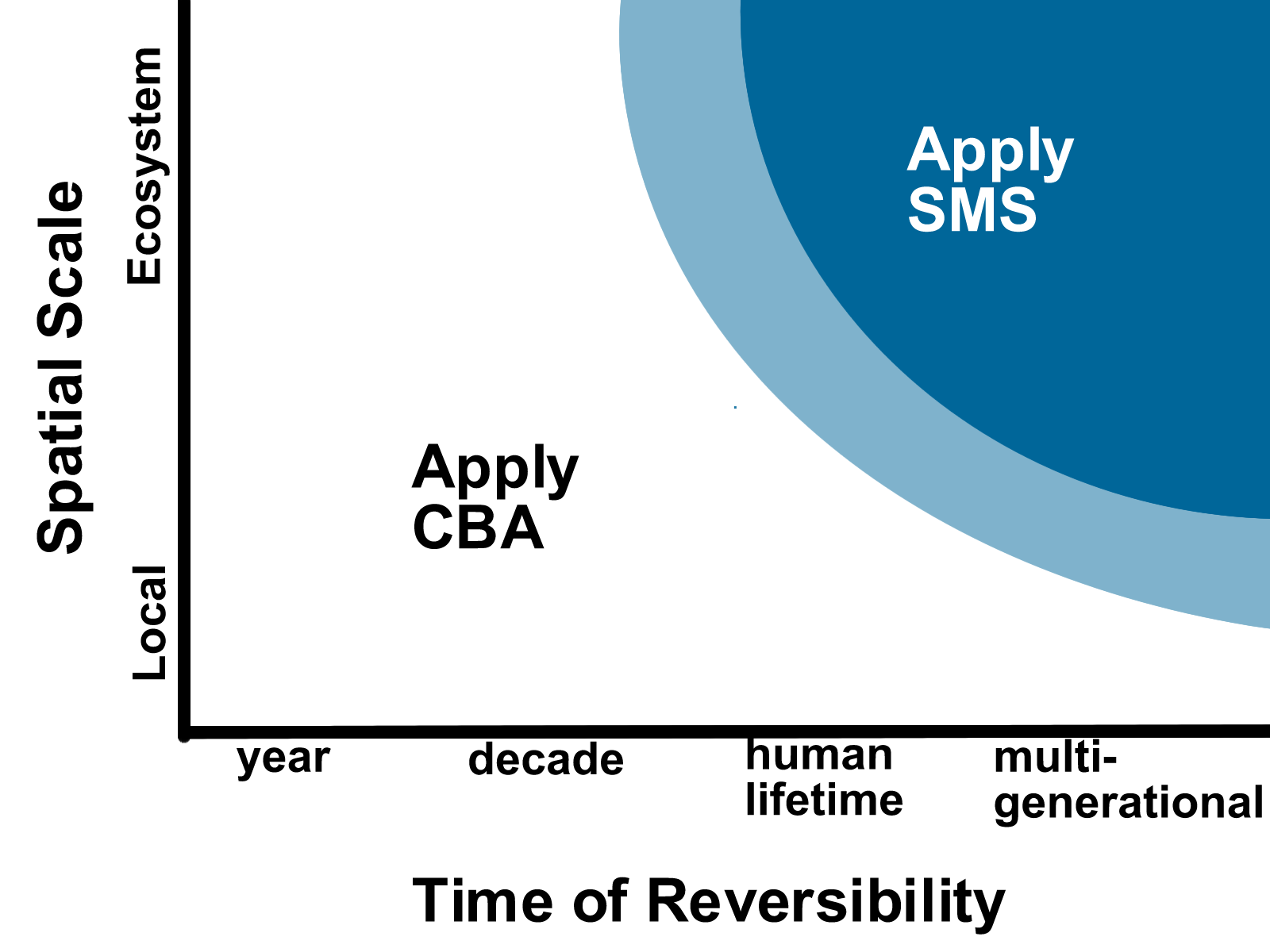Precautionary Principle
Statement from Environmental Science Texts
stated as a principle
From Miller LITE glossary- "When there is scientific uncertainty about
potentially serious harm from chemicals or technologies, decision-makers should
act to prevent harm to humans and the environment."
From McKinney and Schoch - "the principle that advises that, in the
face of uncertainty, the best course of action is to assume that a potential
problem is real and should be addressed ("better safe than sorry").
Support for decisions
under uncertainty vs. probabilities
one social value of science is to turn "uncertainties" into probabilities
and risk
cost and benefits accounting
flipping a coin as an example --
but what if you're only flipping the coin once?
Different standards for decisions (from Ervin et al 2001)
"The concept of substantial equivalence has been transferred
from conventional breeding to the U.S. approval process for transgenic crops.
The application is based on reasoning that most of these bioengineered plants
are only slight variations of their conventional counterparts, due to “precise”
insertions of a single novel gene."
Canadian panel "endorsed the “safety standard” approach,
which requires a “rigorous demonstration” of no additional health or environmental
risks. They stressed the “absence of evidence” of significant environmental
risks should not be accepted as “evidence of the absence” of significant environmental
risks." similar to US drug safety regulations.
Table 1 compares US with Canadian policy
| Questions |
U.S. Regulatory Process (Minimize Type I Error) |
Precautionary Principle (Minimize Type II Error) |
| Who should bear the burden of proof? |
Those who allege potential harm |
Those who introduce the technology |
| What standard of proof is required? |
Decision Threshold |
Safety Standard |
| What costs of constraint should be taken into account? |
Foregone benefits from the release of transgenic crops should be weighed
heavily |
Potential risks from the release of transgenic crops should be weighed
heavily |
| How should decisions be made? |
Compare estimated benefits with estimated costs using current information |
Avoid or prevent potential serious and irreversible risks until more information
is available |
Define the answer with three phases rather than two
Lemons et al 1997
"a type-I error is to accept a false positive result, that is, to conclude
that harm to resources will result from existing or proposed activities when,
in fact, no harm will result. A type-II error is to accept a false negative
result, that is, to conclude that no harm to resources will result from existing
or proposed activities when, in fact, harm will result."
use three rather than two frames (true, false)
the intermediate third frame is to provisionally accept a null hypothesis
until it is rigorously falsified
| SAFE |
TAKE
PRECAUTIONS |
HARM |
Relationship of precautionary principle to "safe minimum standard"
From Norton 2005, pg 346
PP = "in situations of high risk and high uncertainty, always choose the lowest-risk option"
SMS = "save the resource, provided the costs of doing so are bearable"
but use of either of these is related to scale of problem and the reversibility
use cost/benefit analysis CBA or apply SMS

Game Theory view of precautionary principle
avoid the worst possible case in games against nature
|